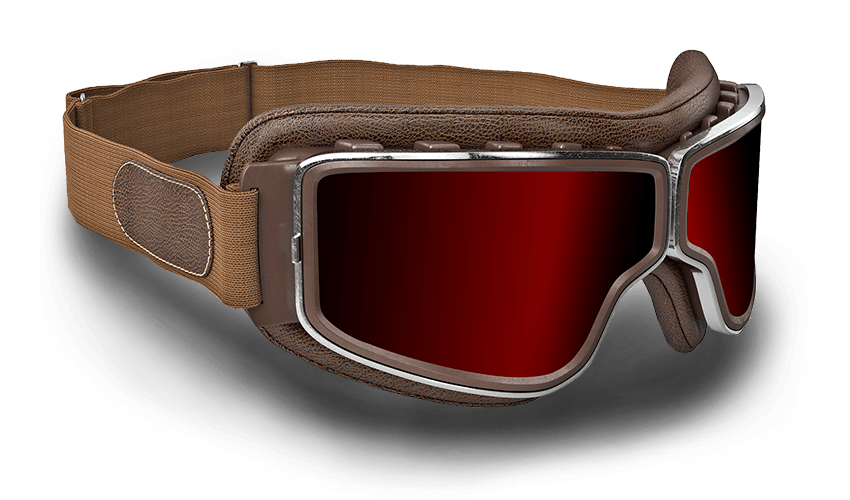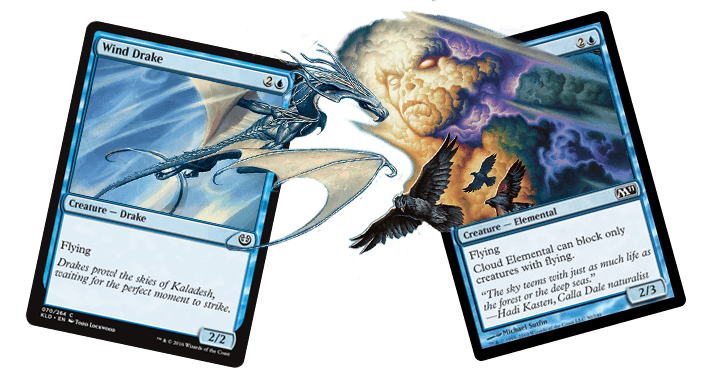The Invention of Flying
Flying. One of Magic's most integral mechanics. It's been in every single set. You could argue it's the best mechanic ever made—simple, flavorful, and a massive aid to gameplay.
It is an evasion mechanic, meaning it gets your creatures through. And often, it's taken a bit for granted precisely because it is such an everlasting, evergreen ability present since Magic's inception.
But flying, like any other ability, has its own tricks, its own suite of evaluations to think about in practice.
How much of a difference does being a flier or not make in your deck? How highly should you value a flier on the board?
Let's take a look at these questions today.

Flight School
At its core, flying is a way to either make sure your creatures hit the opponent or to block your opponent's creatures with flying. This means that the value of a flying creature depends on your opponent's deck more than it does on yours.
For an extreme example, let's say you're playing against a Paradox Engine combo deck that features no creatures at all.
Well, flying is entirely irrelevant! If your opponent never plays a creature, they were never going to block in the first place. You can extend this philosophy to most control decks, which tend to contain very few creatures.
But it's not just against creatureless decks that flying is weak. Against any aggressive deck that seeks to kill you quickly, such as a red "Sligh" deck with a bevy of cheap one- and two-mana creatures, flying is unlikely to do much. (Unless, of course, they have fliers to block!) If you've put that sort of deck into a position where they're blocking your attacking creatures, then you're probably winning anyway.
Okay, so when is flying actually good, then? Well, flying is at its best if you both are playing a lot of creatures and the board is prone to ground stalls. It's also quite good against planeswalkers.
For those reasons, flying is great in aggressive decks as a way to keep pushing damage through even when the board is clogged and midrange decks because it gives you a way to get through if the board stalls against other midrange decks.
Let's say there are two similar cards you're evaluating for inclusion in a deck. Take these, for example:
If you can only play one, you really have to ask yourself how important that flying is. The one mana can make a huge difference! You should think about the metagame (what kind of decks you expect to play against) and what kind of deck you are.
If you're very aggressive, you'd probably rather have the two-drop. If you're more of a midrange deck, perhaps you'd prefer the slower one that can break through and also block opposing fliers.
These are the kinds of ways you can begin to evaluate flying in deck building.
In Draft, this kind of decision is one that will come up time and time again as well—and knowing your deck is very important. Generally speaking, in Limited flying is quite strong because everybody has plenty of creatures and boards tend to get stalled. (Not to mention you'll want answers for your opponents' flying creatures!)
But that doesn't mean always take the flier. In an aggressive Draft deck, you would usually rather have a good two-mana ground creature than a four-mana 2/2 flier. Knowing what your deck needs—and what tends to happen in the format—will send you on the path to victory.
Enemy Airships
Here's a situation you'll run into plenty of variations of in Limited.
Your opponent has a 2/2 flier and a 4/4 ground creature. You have a Murder you want to cast. Which should you kill off?
Well, as you can expect, the answer is context.
If the game goes long, that flier is going to be a problem provided you can't deal with it.
So the questions you have to ask yourself are threefold: how bad is the immediate threat of the 4/4, how long until I can deal with either, and who is the aggressive player here?
First, evaluating the immediate threat.
To use a straightforward example, if you're at 4 life and both creatures are attacking you, you had better fire off your Murder on the 4/4. Yes, you're probably going to die to that flier unless you draw an answer—but you're 100% going to die unless you kill the 4-power creature!
To extrapolate that answer out further, every one time the 4/4 hits you is equivalent to two hits from the 2/2. So if you're at 8, killing the 4/4 buys you three more turns to kill the 2/2 rather than just one, and so on. Thinking ahead will tell you a lot about which is the greater enemy.
Next: how long until you can deal with either?
If you have no creatures but your next play is a Catacomb Slug, then that 4/4 is going to quickly be made irrelevant. On the flip side, if you're holding a Cloud Elemental, then you're going to be able to blank their flier but not the 4/4.

In general, the longer the game goes, the more of a problem that flier poses because it can get past more creatures. It's a lot easier to gum up the ground and double block the 4/4 in time. If you're at 20 and they're both attacking you, and you do indeed want to Murder one, the Wind Drake is by far the scarier one for the longer term.
Finally: who is the aggressive player?
So far we've been assuming that the opponent is attacking us, but that may not be the case! Let's say they are actually holding back. In this case, we're probably using the Murder aggressively because we want to get through for damage.
As a result, it just boils down to which creatures you have. If you have a flier you want to sneak through, then get rid of their flier. Generally though, since fliers are worse at blocking, you'll want to remove the big ground creature and swing on past!
So this is how to evaluate your opponent's fliers. How do you evaluate your own when, for example, they offer up a trade in combat? You just use the same questions and apply them in reverse!
How much of a threat is this flier causing your opponent? What other ways might they be able to answer it, and how long is the game going to go? Are you actively attacking with it, or are you on the back foot and defensive anyway?
Thinking about these core concepts should send you in the right direction when trying to evaluate the power of a flier.
Pilot's License
That wraps up our look at flying! Hopefully now you're able to soar with the best of them.
If you liked this in-depth look at a mechanic (or if you didn't!), I'd love to hear from you! There are plenty of other evergreen mechanics I could do similar articles for if you enjoyed this one; your feedback is crucial to guiding me further.
Let me know by sending me a message on Twitter, Tumblr, or an email in English at BeyondBasicsMagic@gmail.com.
I'll be back again next week! Talk with you again then.

